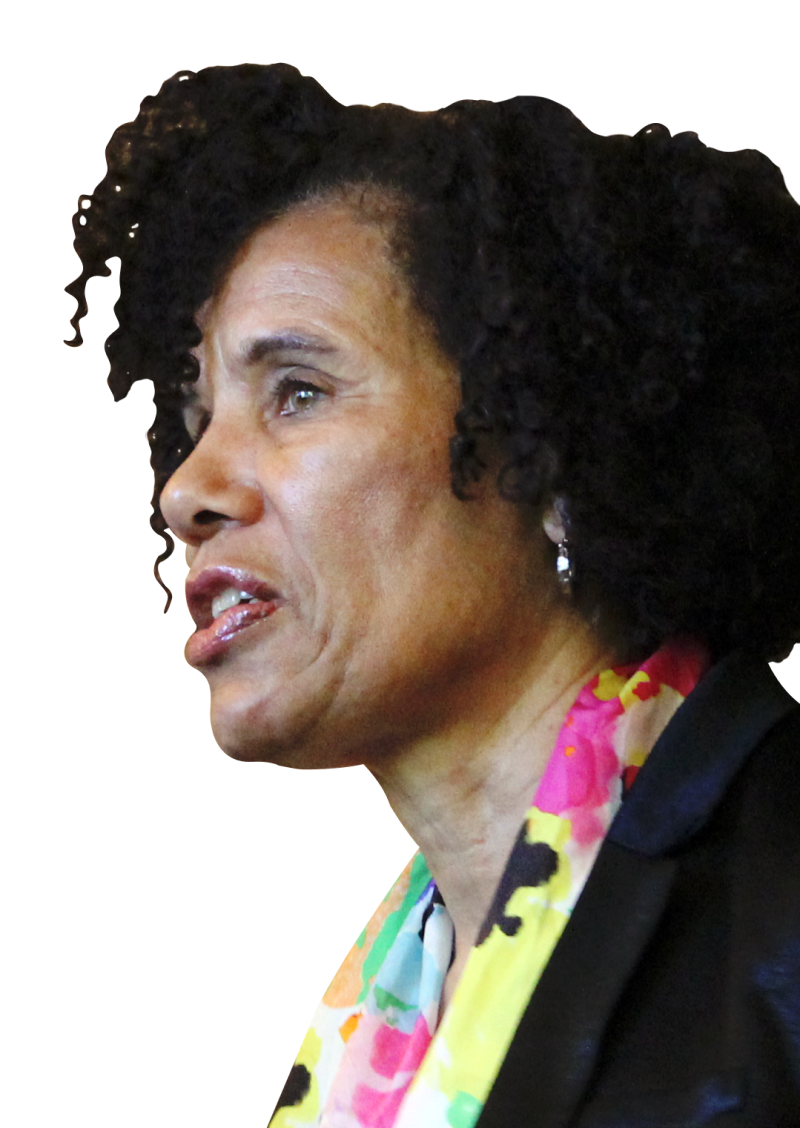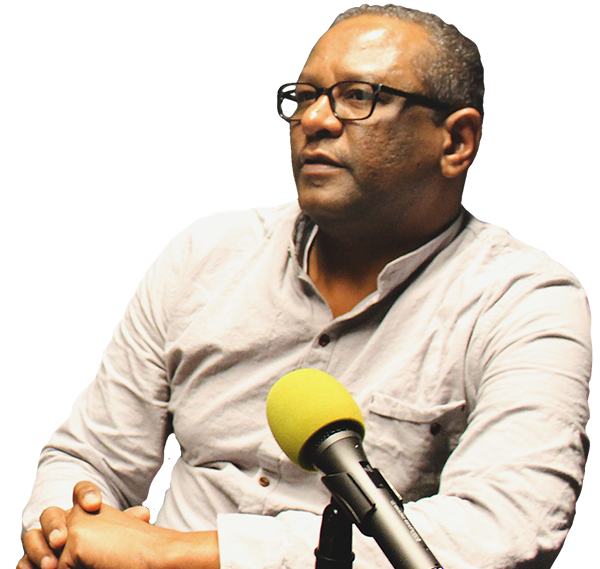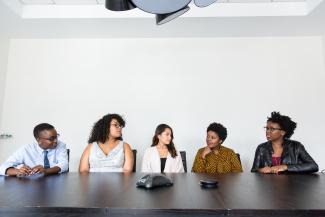WHEN IT COMES TO WOMEN IN STEM, there is a lot of talk of pipeline, bias, and unequal earnings. While these aspects are important parts of the picture, stories of women in STEM cannot be told without addressing a fundamental and core issue—inclusion.
Women make up 48 percent of the total work force, yet only 24 percent of STEM workers. With the tech industry booming, women still only account for 27 percent of employees in computer science and math positions. In the physical and life sciences, just 25 percent are managers.
While in 2009 there were 6.7 million college-educated men working in STEM, there were only 2.5 million college-educated women working in STEM. Additionally, for every dollar earned by a man, a woman in the same industry only earned 86 cents, a 14 percent gender wage gap.
“Pipeline” is a buzz word that surrounds the question of women in STEM. Many experts agree educational disparities begin during the K–12 years. Computer science, for example, is taught in only one in four schools in the United States, according to code.org, although the same survey revealed that 91 percent of parents want their children to learn computer programming.
There also is a deep lack of media and cultural representation around women and people of color in STEM. While there was the 1990s hit sitcom A Different World—featuring a Black male college student studying mathematics—and Family Matters—showcasing a quirky young Black character named Stephen Q. Urkel as someone intensely and unapologetically interested in the sciences—these figures were men.
While it is important to encourage students of color to pursue work in STEM, it is critical to make sure that girls and women see themselves represented in cultural milieus as well. Some media and toy markets that girls of color are beginning to shift. One notable cartoon, Doc McStuffins, features a young Black girl treating the “illnesses” that her toys have, similar to the way that her mother—a doctor—treats her patients. There is also a TV series called Project MC2 that features girls of all colors who are interested in math, science, technology, and engineering. A product line of dolls feature images of the television characters and wear t-shirts with captions such as “I am the sharpest pencil in the box” and “I’m smart, get over it.”
Another culture maker working to challenge the way children of color are exposed to careers in STEM is Christopher Emdin of Teachers College, Columbia University, who is using Hip Hop music to teach science to boys and girls. He notes that for many children, including girls of color, Hip Hop is a part of their identity, and therefore an important tool to reach these children where they live, learn, and engage.
But culture and media are also arenas where bias plays an important role. Bias comes in many different forms. According to “Gender Bias: Against Women of Color in Science,” there are four types of gender bias, and they affect all women of color. Biases include the prove-it-again bias, the tightrope bias, the maternal wall, and, tug of war. These biases can create an atmosphere, both in school and in the workforce, that make it unpleasant at best, but violent at worst.
Violence directed against females getting an education is worldwide and not central to any one part of the world. In countless situations, women and girls have been barred from getting an education or punished for doing so. A famous example was the 2014 kidnapping of almost 300 school girls in Nigeria, another the “Montreal Massacre” in 1989 at École Polytechnique, where fourteen women were killed, twelve of them engineering students, one a nursing student, and one an employee of the school. During the first part of the massacre, the women were separated from the men students before being shot. And one of the most noted cases of violent retaliation was Nobel Laureate Malala Yousafzai, who was banned from school, threatened, and then nearly assassinated for exercising her right to an education.
These occurrences highlight a disturbing pattern that affect a fundamental issue: the simple right to education for women.
While some of the above examples are extreme, biases range from subtle to overt and don’t just happen in the educational system but carryover in the workforce.
Christine Medina, a Latina biomedical engineer, decided to study engineering, choosing it because it combined two things that she really liked: math and science. After graduating college, she worked in office supply corporate sales for a year before switching to project management in the oil and gas industry. She recalled several times where she was incorrectly assumed to have achieved her status by means other than merit and education. Sexual harassment dotted her professional experience. She said, “Oftentimes you might get harassed by the same group of people every day, multiple times a day. If you go to HR every time, they won’t take you seriously.” While she was able to shut down unsavory comments, she noted that not all of her female colleagues had success doing the same.
She also talked about being told that she “stuck out like a sore thumb” and “looked like she didn’t belong.” She was one of only a small handful of women of color in her office. She felt that her height and race were always on display. She did have one high-ranking female mentor when she started her job, but it was only short-term.
Aryanne Ferguson, an African-American mathematician who works at NASA, discovered her interest for math after realizing that the world wasn’t just black and white, but was shades of grey. She said, “As I got older, the shades of gray started kicking in, and I no longer knew the right answer or the wrong answer. Except in math. In calculus or number theory, I liked that there was always a right answer, and I found comfort in the systematic ways that math requires a person to progress from question to answer.”
She mentioned the most important aspect of her education in STEM was that it taught her how to use reasoning skills to break down complicated problems into solvable pieces. “Years of problem sets also gave me the patience to work at a problem until it’s solved. Those are skills that I use every day in my position [at NASA].”
Both women did not want to be constrained by the traditions of their fields. But in the face of other challenges and barriers that appear, working against the current can take a toll on any woman.
Pushing through the barriers on the long road to working as a woman in the STEM fields can come at a cost to mental health. When women constantly get messages of not being accepted, that their best isn’t good enough, and that they will always be challenged in ways that have nothing to do with talent and ability, it can eat away at self-esteem and confidence. Dr. Amani Nuru-Jeter, Associate Professor of Epidemiology, Community Health and Human Development at UC Berkeley, who studies the particular impact of trauma and stress in the expeiences of Black females, said, “There can certainly be a tendency to push forward... to be a ‘strong Black woman’ and to push through the obstacles, often in conjunction with lack of self-care. Superwomen schema, a construct that was developed by a scholar at the University of North Carolina, UNC (C. Woods-Giscombe), touches on this and is currently being used to investigate associations with both mental and physical health and well-being.”
Nuru-Jeter shared her experience: “As a member of the University Committee on Affirmative Action, Diversity, and Equity, a lack of adequate professional support and mentorship plays an important role in people of color, especially women, leaving the STEM fields in spite of their aspirations to pursue STEM fields and careers. Anecdotally, I can say that there is certainly some racial discrimination at play and that can manifest in several ways, one of which is lack of mentorship, lack of, or at best limited opportunities, social isolation and more direct efforts to dissuade students from pursuing STEM fields in favor of the social sciences.”
Women in STEM may feel this way because of the lack of value that is placed on their presence and their work. When their contributions are ignored or stolen, when their thoughts are dismissed, and when their bodies are treated as if they do not belong, it is difficult to hold fast to their value. These feelings alone have very real consequences, and it is important to recognize how people and institutions can perpetuate a feeling of non-value. Diversity and inclusion efforts can throw people into situations where co-workers or co-learners have not fully adjusted to alternative perspectives, especially in male-dominated fields. This can lead to people with the best of intentions saying or doing something that can alienate or hurt another individual on a level that cuts even more deeply.
To effectively reject a feeling of non-value and begin the healing/repairing process, five factors must be met. According to Rajkumari Neogy, founder of iRestart and the Disruptive Diversity coaching framework, the five factors are: integrity, participation, trust, connection, and support. Neogy notes that connection is one of the most important elements because: “I can’t bond with you (connection), because I can’t trust you (trust), because you have no idea what I am going through (participation) because you can’t see me (integrity).” Neogy supports this framework with correlations to the brain that bridges the reality of the situation with the neurobiology which makes it possible.
The healing/repairing process is critical to mending the schisms between what diversity and inclusion might look like in STEM and what women actually experience while studying and working in these fields.
In the area of inclusion and representation, there are people who are directly targeting girls . Kimberly Bryant, founder of Black Girls Code in San Francisco, works with a team to set up classes and workshops for girls aged 7–17 to learn coding, in order to give them a competitive advantage and to help to bridge the “digital divide”—the gap between those with regular access to technology and those without. Bryant is in the process of building a “Black Boys Code” program as well.
WiSE (Women in Science & Engineering) has a pilot program called “WiSE Women of Color in STEM” which will launch a “new series of undergraduate programs called Excellence in STEM programs (ESP) … that will support WiSE’s mission to support the achievement of excellence in STEM and persistence towards graduation while fostering a ‘I can do it’ attitude.”
At the graduate level, UC Berkeley has a program that works to bridge the gap to channel more people of color, into the science, math, technology, and engineering. Diana Lizarraga, Director of Cal NERDS (a diversity-in-STEM program at UC Berkeley) believes that to get more women of color into STEM graduate programs, a hybrid opportunity needs to be pursued by both universities/recruiters and students. Strong relationships between the students and the universities need to be built and maintained. These relationships can mean the difference between a successful time in graduate school and later the work force.
But the reality remains that for many women, the qualifications aren’t enough. Relationships are key and in that arena non-whites are at a distinct disadvantage. People of color are often situated differently in society and require different means to reach the same goals as their white counterparts. This can mean economic, cultural, social, and physical differences can be essential to other people of color outside of STEM, because they may not have the same opportunities and advantages as their counterparts.
To help bridge these gaps, Lizarraga and her team work to give the graduate students training in social media and creating their digital profile, which helps lessen the digital divide. Her students get guidance on poster presentations and application materials. The students are also learning to build and leverage relationships, and are assisted with tools such as headshots, professional attire that help give them the confidence to navigate the fields that are still slow to accept them. For Lizarraga, these barriers, and the corresponding fears, are mitigated because the students of color in STEM will be working and advancing on the same playing field as their white counterparts.
Lizarraga frequently asks her students “What do you see? What is your vision? What do you want?”
With the groundwork being done by so many scholars, professionals, and advocates, the answer could be, “I will contribute to the field in my way and on my terms.”







